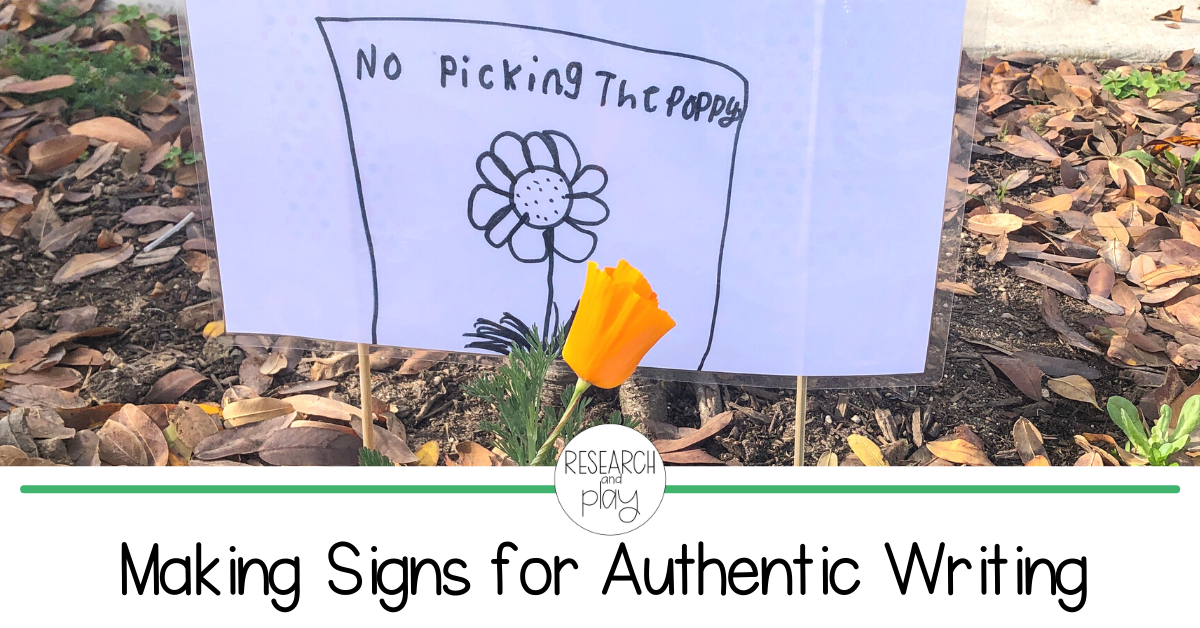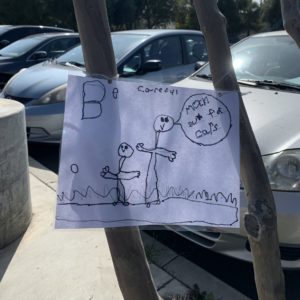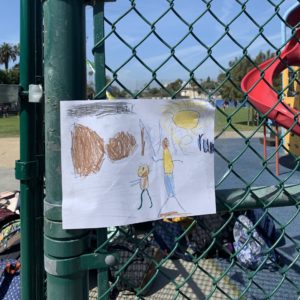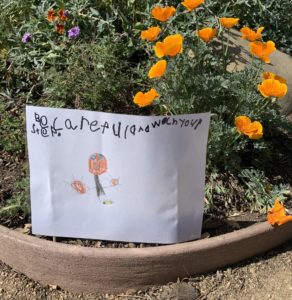Most kindergarten teachers can relate to finding yourself at a point in the school year when writing feels like a chore to your students. After all of the work you’ve done together with using sentence stems, stretching out words, adding finger spaces, and not forgetting your ending mark, students can start to feel a little uninspired during writing time. I’ve found one thing, though, that always sparks excitement and gets students authentically engaged in writing: making signs!
Seems simple, but it works! Isn’t that the best kind of activity? Over the past few years, I’ve found that at some point in the spring, my students’ interest in writing starts to wane. It’s also the time of year when lots of new, exciting things start happening outside our classroom window: colorful flowers are blooming, new insects are appearing, visitors are coming onto campus for tours and other events, and so on. We also begin our study of spring and start spending more time outside. All of these things have led to authentic engagement and a desire to write in the form of signs!
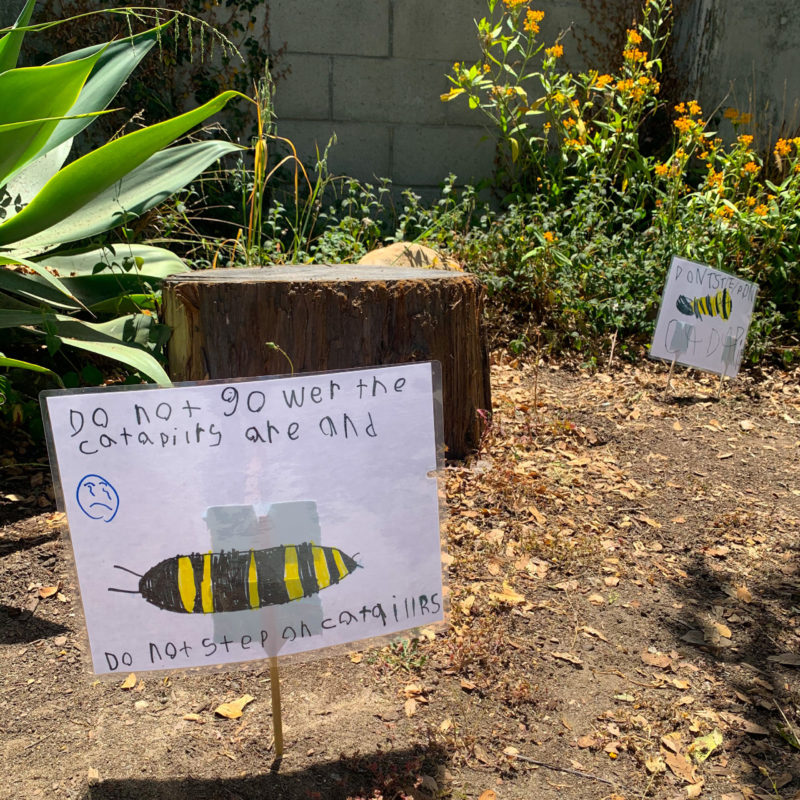
Here’s how it usually happens:
We are on a walk outside checking for signs of spring like new blooms or caterpillars. Students’ language is abundant, they’re noticing details of the things around them, and they’re excited.
I begin to ask questions, leading them somewhat in the direction of ownership and urgency. I’ll ask, “What do the caterpillars need to become a butterfly?” hoping to hear them talk about a cocoon. I may mention “Poppies are the state flower of California, I hope no one picks them so that we can all enjoy them in the garden.” hoping that they’ll feel urgency to make sure that happens. I may also ask or talk about nests in a tree, litter in our garden, or bees buzzing around flowers. All of these topics are intentional, knowing that kindergartners at this stage have a tendency to take ownership of things they are interested in.
Discussions typically start happening around the things we’ve noticed, especially about keeping the caterpillars safe or protecting the bees as they work. We may even start to talk about visitors on campus and helping them learn our rules like walking safely instead of running on the sidewalk. My guidance is intentional, but the resulting discussion and topics stem from what the students connect with and show interest in.
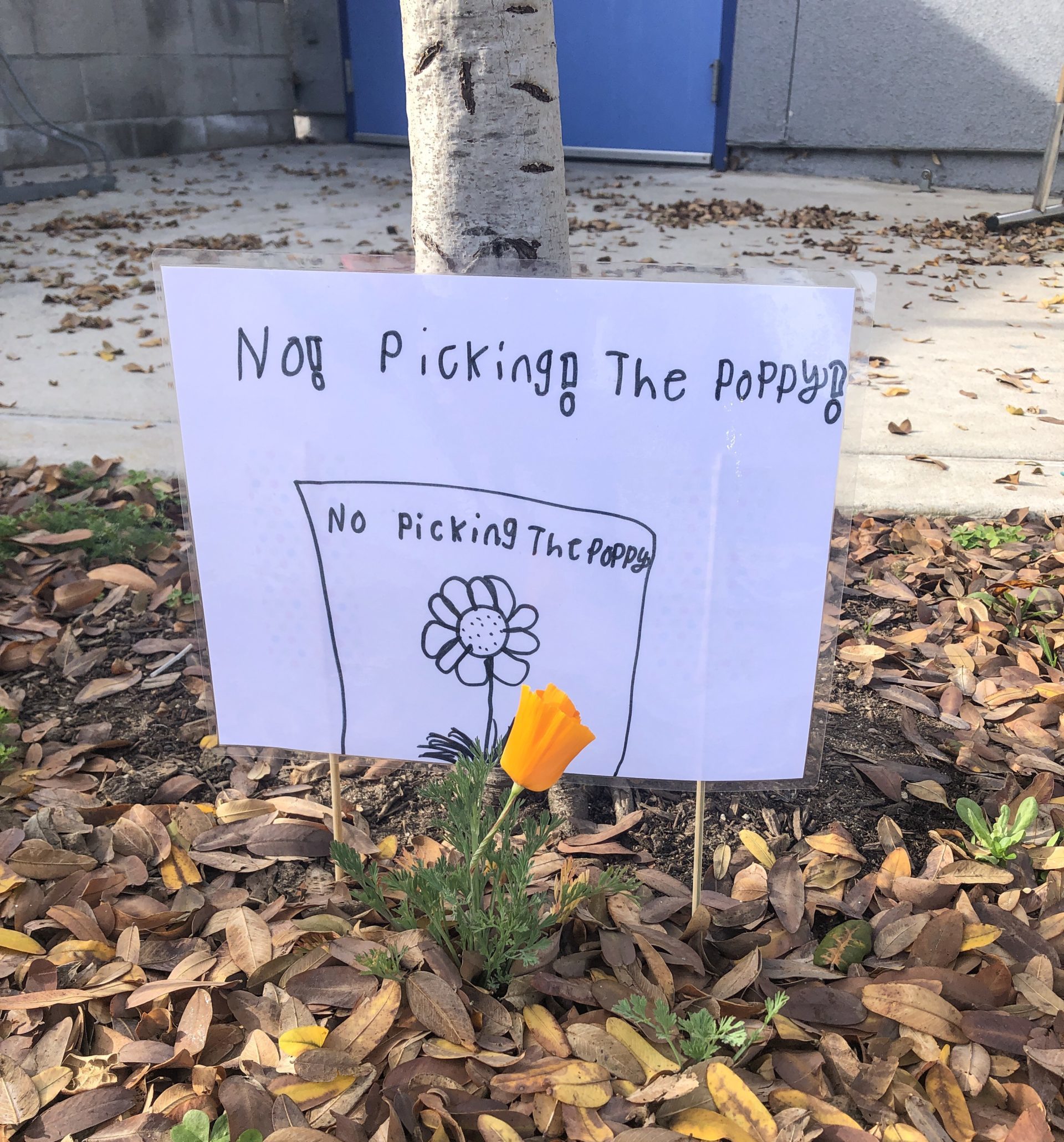
A pattern starts to emerge: recognition of a problem (flowers getting picked), a sense of urgency (protecting the caterpillars while they transform), or ownership (showing visitors our school rules), followed by needing to act on those feelings by communicating them to others. A brief discussion may occur about how we can let people know what we want to tell them. Usually I ask one question that sets it off: “What if we made a sign?”
My role
Once the ideas are flowing, my role becomes very minimal. At this point in the year, many students have writing skills that allow them to be independent. Those who don’t are coached by their peers in an authentic, meaningful way. My role becomes that of laminator! As students decide on the sign they want to make (depending on the topic of conversation), they start writing and drawing. Since we have community access to supplies, they get their own paper, crayons, markers, etc. Since we enjoy flexible seating and freedom of movement, students walk to their friends’ learning spots and compare signs. They may stop and help stretch out a word. Since these signs come from their own ideas, I rarely need to help sound words out or lead the writing. They write or draw exactly what they want to communicate.
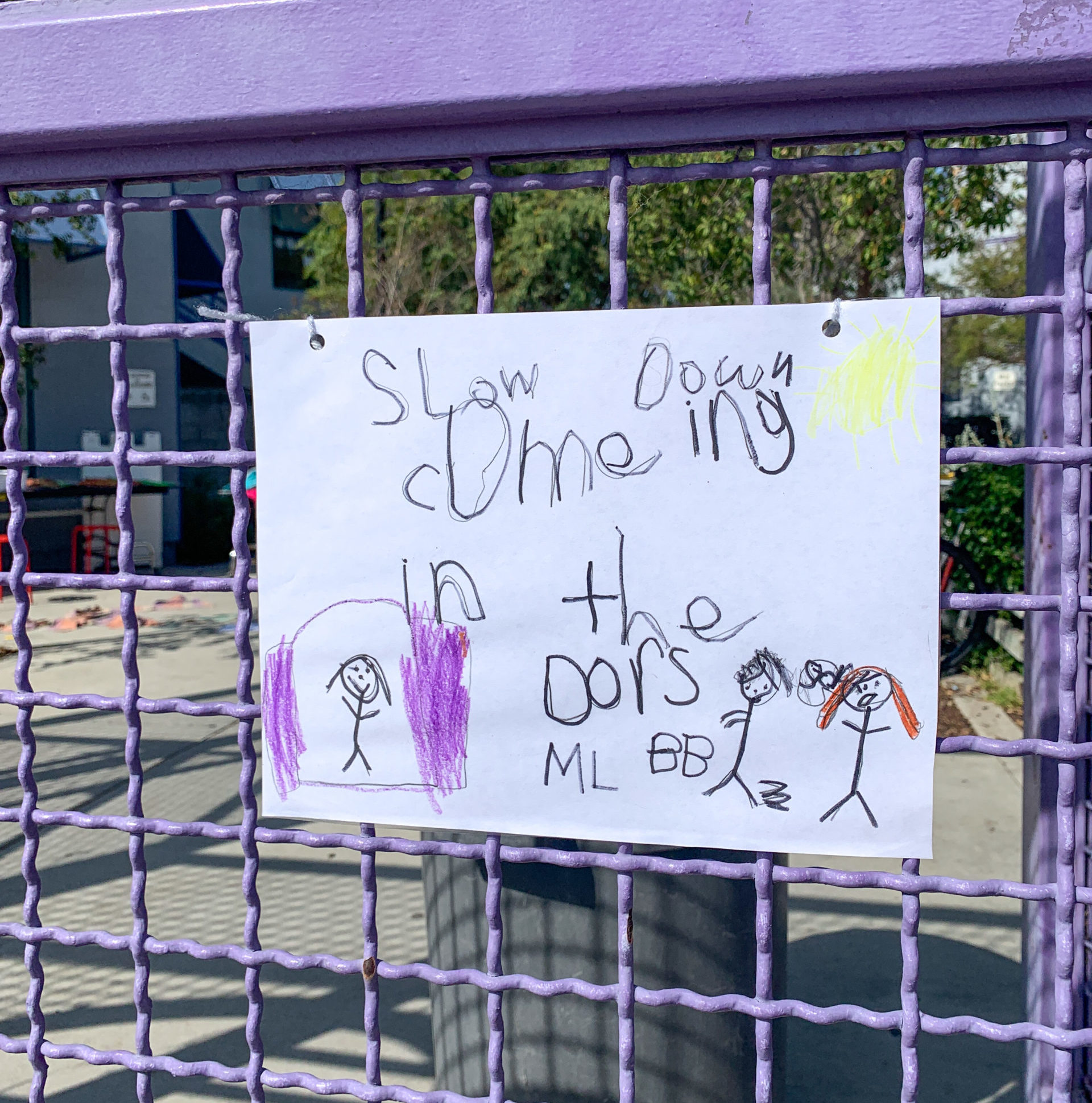
I simply plug in the laminator and wait for signs! I use a personal laminator for situations like this. Students love seeing their sign become “official” when it slides out of the laminator. If it’s one that can be taped up, we’ll grab it and go. If it’s one that needs to be put into the ground, I use popsicle sticks or chopsticks (a great use for the ones you get with you takeout sushi!) and duct tape.
Students bring their signs into the space where they think their message should be seen. We’ve put signs in our garden, on our front gate, in our parking lot, near the playground, and all around our school. Make sure your admin is okay with this, but hopefully they can see the importance of allowing students an authentic writing experience!
We refer to the signs often as we are around campus. We encourage our principal and other teachers to notice and read them to visitors and other students. My students always feel a sense of pride for helping or protecting. And I get to see an authentic, beautiful writing experience unfold.
Near the last day, we are sure to go around and remove our signs. Many times, students want to keep their signs for the summer. That’s a great sign of their connection to the activity!


